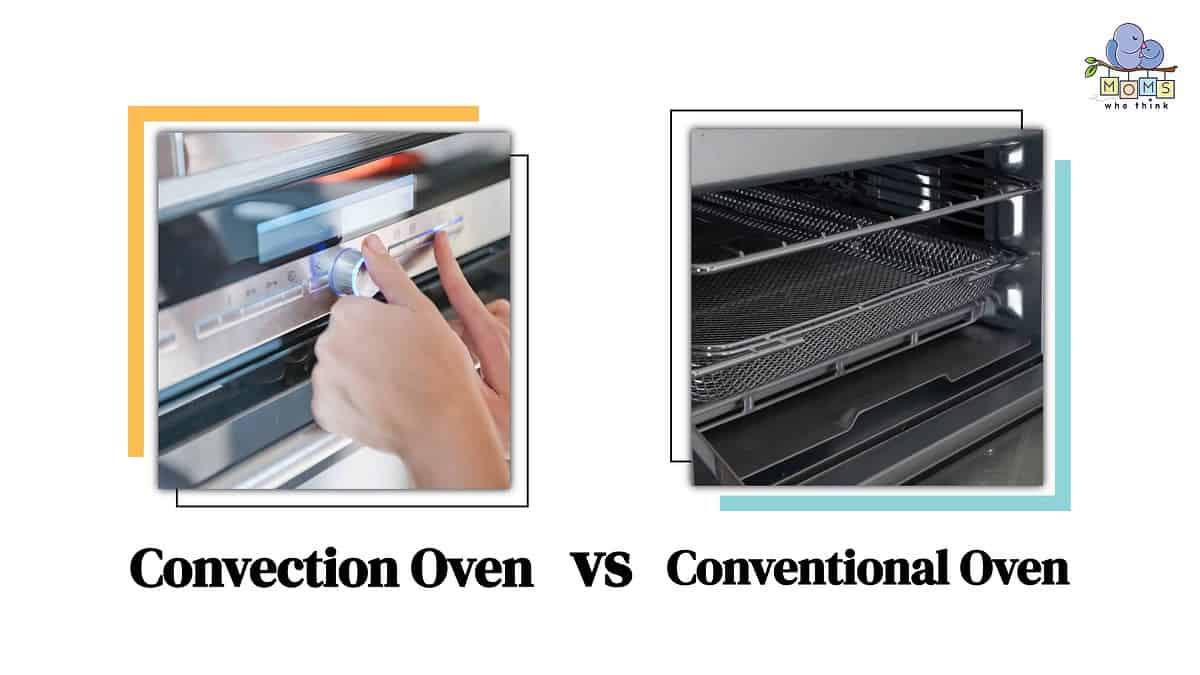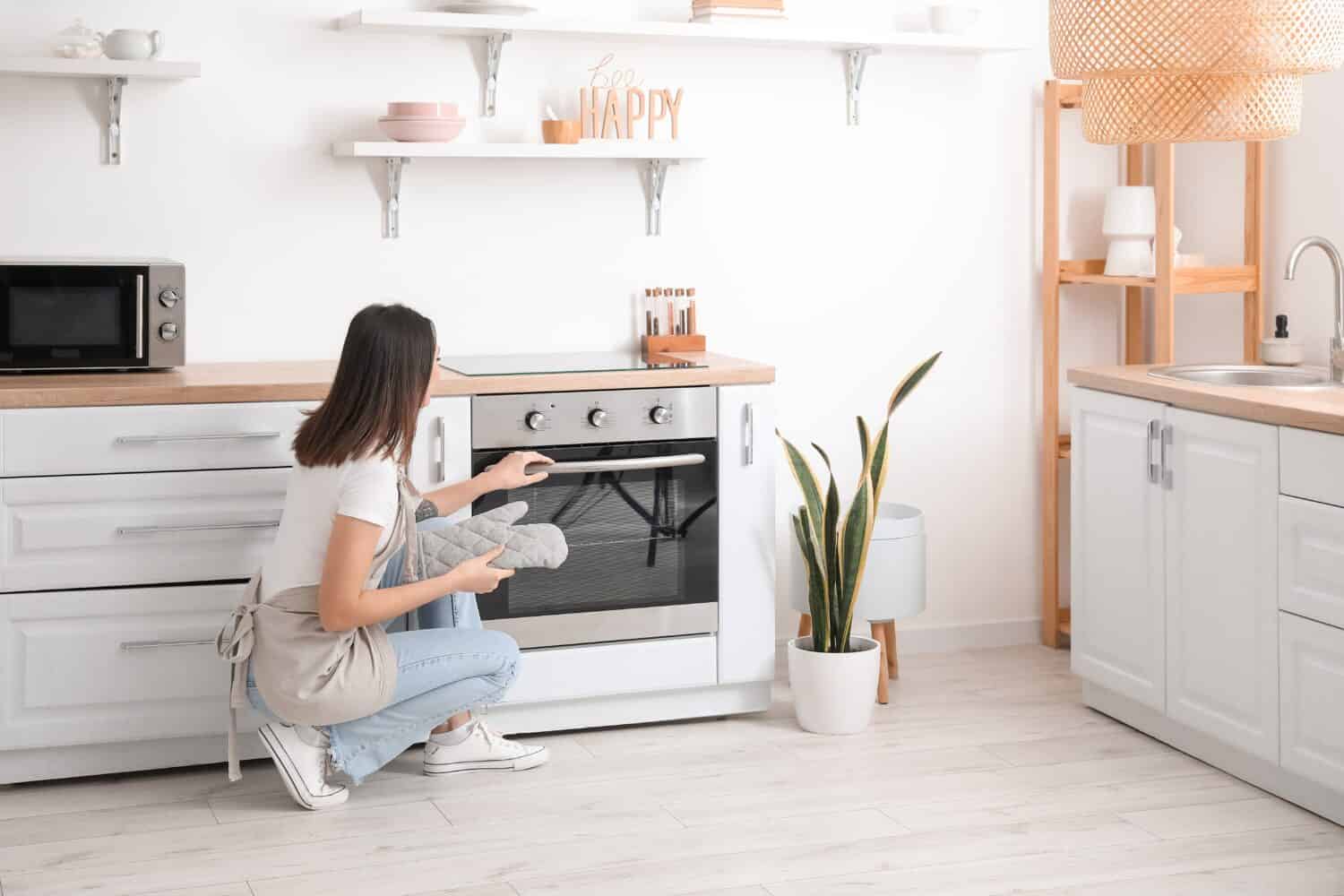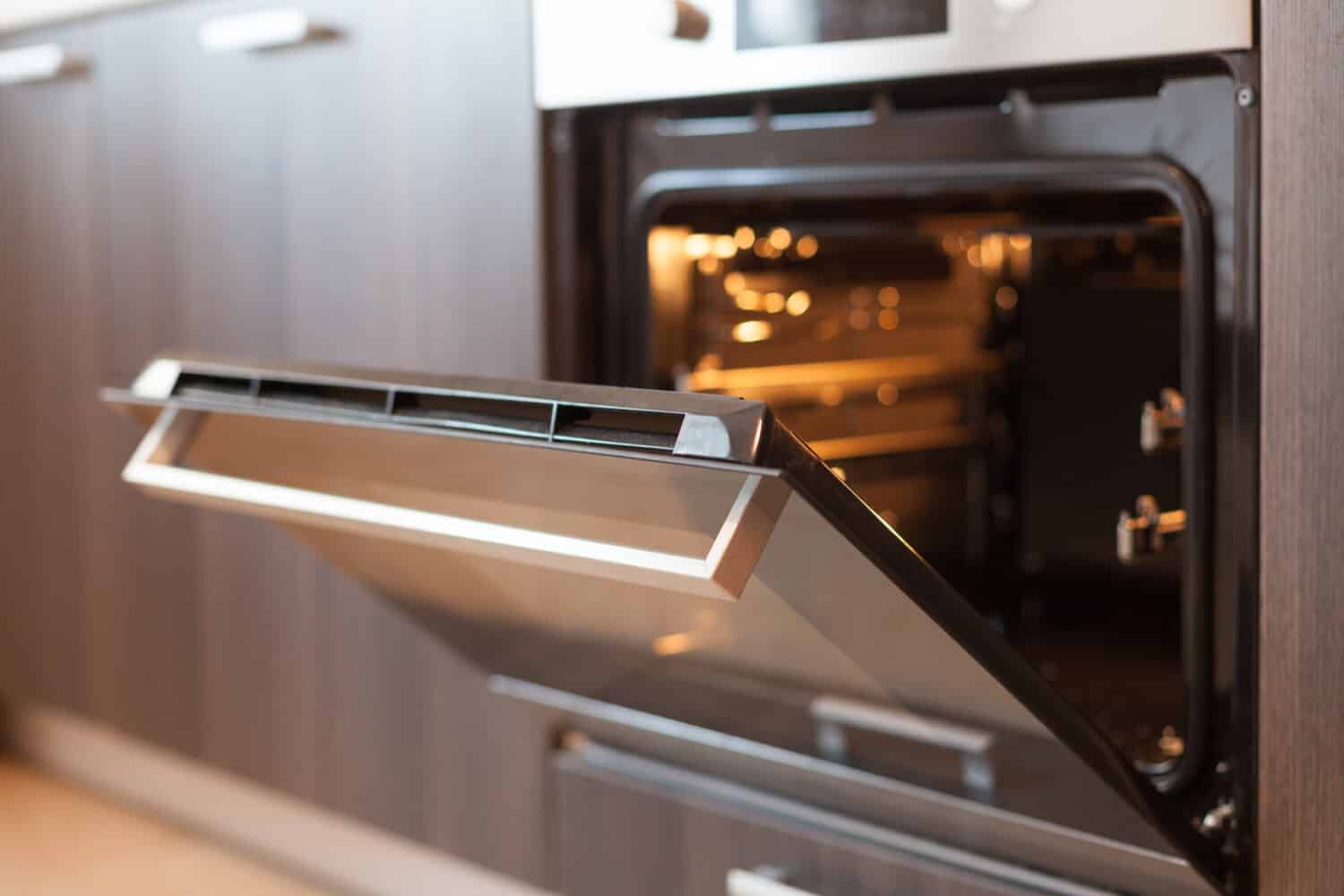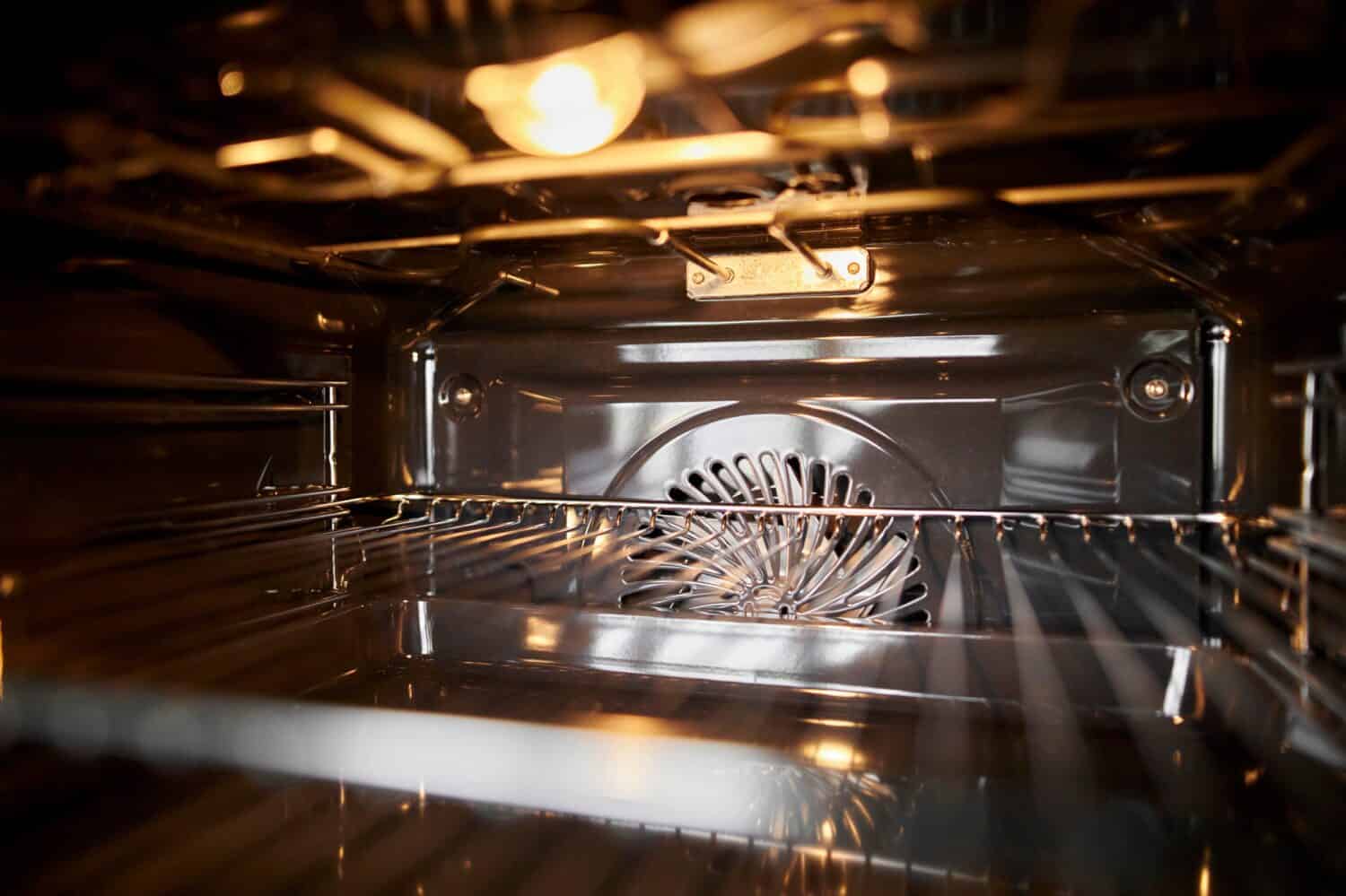You may be considering the purchase of a convection oven and wondering if it is genuinely better than a conventional oven. Depending on your cooking preferences and the types of dishes you frequently prepare, convection ovens offer advantages such as more even cooking, quicker cooking times, and better browning. They excel at baking, roasting, and achieving crispy textures.
However, traditional ovens remain popular and have their merits. Conventional ovens have drier heat, making them ideal for browning foods. Using the oven racks appropriately gives you more cooking options. Since most recipes have traditional ranges in mind, you do not have to change the formula. Finally, conventional ovens offer more familiar functions.
With all of this in mind, let us examine the five main differences between the convection oven vs. conventional oven.

Convection Oven vs. Conventional Oven: What is a convection oven?
Unlike conventional ovens, convection ovens have a fan and exhaust system that circulates air more evenly throughout the range—the consistent heat distribution results in shorter cooking times with lower cooking temperatures. The energy efficiency of convection ovens also means less time is needed to preheat. Additionally, the air circulation ensures that food cooks evenly, resulting in better browning and crispiness.
Convection ovens are especially good at baking breads, pastries, and cookies. They excel at roasting meats and vegetables. In a conventional oven, hot air can rise if you cook food on both oven racks. Food on the bottom shelf may be undercooked, while food on the top frame may be overcooked. This unfortunate situation does not happen in convection ovens because the air circulation allows more even cooking.
However, it is not all good news about convection ovens. While convection ovens offer even cooking and fast results, they often require adjustments to cooking times and temperatures. Using the wrong cooking time or temperature potentially leads to drying out or uneven baking and might crisp foods more than desired. These ovens can also be noisy, require specific cookware, and have a learning curve. However, their benefits often outweigh these drawbacks depending on your cooking needs and preferences.
Convection Oven vs. Conventional Oven: What is a conventional oven?
A conventional or traditional oven uses stationary heating elements at the top and bottom of the range to generate heat. The heat rises naturally, and the stove relies on natural convection currents to distribute the heat throughout the oven. Conventional ovens are versatile and can handle various cooking tasks like baking, roasting, and broiling. Still, they might have slightly longer cooking times and less consistent browning than convection ovens.
The bottom heating element is the primary heat source, while the upper heating element delivers intense top-down heat. The bottom rack is better for large meats like chicken or turkey, whereas the top frame is best for broiling. The middle oven shelf is best for baked goods. Unlike convection ovens, conventional ovens do not have a fan to circulate air. Placing food on the right oven rack is essential for the best cooking results. Additionally, dishes usually need to be rotated for a more even cooking.

Using a convection oven has a learning curve because you typically need to adjust cooking times for regular recipes.
©Pixel-Shot/Shutterstock.com
Convection Oven vs. Conventional Oven: 5 main differences
So, how do convection ovens differ from conventional ovens? The following table highlights the differences in heat distribution, cooking times, browning, temperature adjustment, and cookware compatibility between convection and conventional ovens.
| Convection Oven | Conventional Oven | |
|---|---|---|
| Heating | This oven uses a fan to distribute hot air for better cooking and browning evenly. | Conventional ovens do not have a fan. Cooks rely on stationary racks, which can sometimes lead to uneven cooking. |
| Cooking Time | It cooks food faster because of increased heat transfer. | Traditional ovens have longer preheating and cooking times. |
| Browning and Crispiness | Convection ovens provide excellent browning and crispness. | Browning and crispiness is less consistent. |
| Temperature | It often requires adjusting the temperature for recipes designed with conventional ovens in mind. | Cooks do not typically have to adjust cooking times—additionally, more gentle heating leads to more desired moisture in some foods like cake. |
| Cookware Compatibility | The strong airflow within the oven can damage lightweight cookware. | This oven can handle different types of cookware without airflow concerns. |
Convection Oven vs. Conventional Oven: Pros and Cons
Now that we know what these ovens are and how they differ let us examine the pros and cons of each oven type. First, we will examine the pros and cons of cooking with a convection oven.
Pros and cons of cooking with a convection oven
| Pros | Cons |
|---|---|
| The constant airflow cooks food faster. This oven cooks food around twenty-five percent faster than traditional ovens. | Recipes need adjustments to cooking times and temperatures. |
| The fan inside the oven cooks food at a set temperature. Less time is needed to preheat the oven. | The air circulation within the oven may dry dishes out. |
| The fan improves air circulation, resulting in better browning and crispiness on dishes. | The strong airflow may cause the uneven rising of baked goods like cake. |
| The airflow means you can cook several items on multiple racks without worrying about over or undercooking. | The oven may cause crisping issues to softer or more delicate dishes. |
| Faster cooking times and lower oven temperatures can lead to energy savings. | Lightweight cookware can be damaged in a convection oven. |
Pros and cons of cooking with a conventional oven
Now let us compare the pros and cons of a conventional oven.
| Pros | Cons |
|---|---|
| It is versatile and able to handle everything from baking to roasting. | Uneven heat distribution leads to uneven cooking and browning. |
| Most people are familiar with them. | Often requires the switching of pans to different racks to ensure even cooking. |
| Traditional ovens are cheaper and come in a variety of models. | They sometimes lack the temperature control of a convection oven. |
| Conventional ovens can cause heat to build up in the kitchen, making it uncomfortable. | Food typically requires higher cooking temperatures and longer preheating times. |
| This oven typically works well with all kinds of cookware. | Longer cooking times make traditional ovens less energy-efficient. |

The faster cooking times and lower oven temperatures of a convection oven can lead to energy savings.
©brizmaker/Shutterstock.com
In Summary
Convection ovens and conventional ovens offer distinctly different cooking experiences. Convection ovens use a fan to circulate hot air, providing more even cooking, quicker cooking times, and better browning of food. However, recipes may require adjustments. The air convection can lead to faster moisture evaporation, ruining cakes and other baked goods.
Traditional ovens rely on stationary heating elements and natural convection currents. Their long-term popularity is a testament to their cooking versatility. However, conventional ovens have longer cooking times, making them less energy-efficient. They also require higher temperatures for cooking. Yet they can cook a wide range of foods with simple adjustments. Carefully consider each oven's strengths and pros and cons to make the best-informed decision for your household.
The image featured at the top of this post is ©BLGKV/Shutterstock.com

